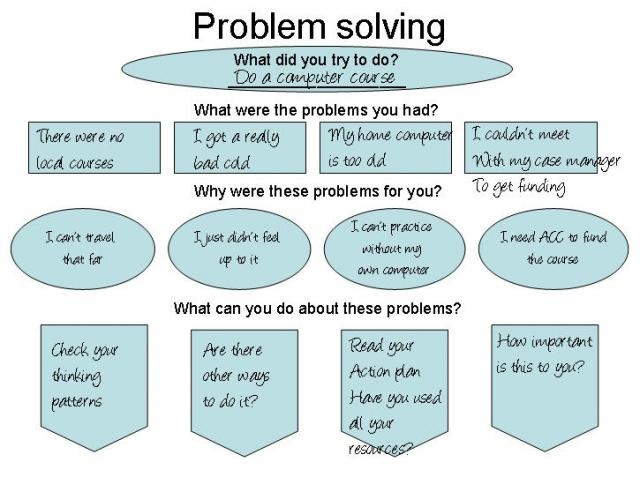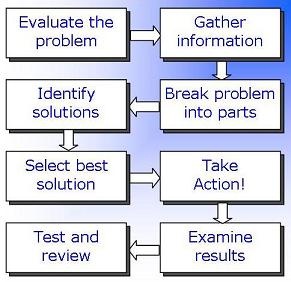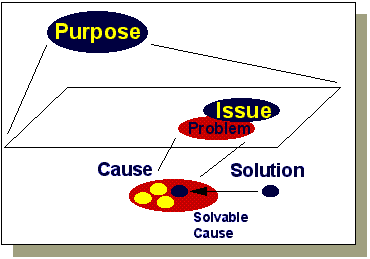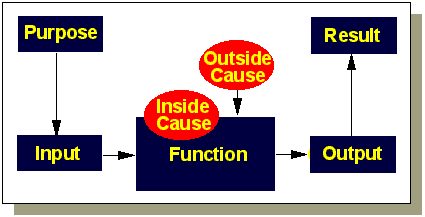INTRODUCTION
This is the third part in a series of three books about
Personal coaching.
Part 1, “Personal Coaching” is about what Personal Coaching
is and offers a surview of the most popular models for
Personal Coaching (or “Life Coaching”) and Self Coaching.
Part 2, “Techniques for Personal Coaching and Self
Coaching” introduces you to the most powerful coaching
techniques in use and describes the most successful
questions and strategies for coaching.
Part 3, “Essential Knowledge for Personal Coaches”, is a
practical standard reference work highlighting the
knowledge and skills that are indispensable for anybody
who is considering life coaching as a career or as a serious
self coaching process,
Dean Amory's Complete Life Coaching and Personal
Coaching Course is your best guide for coaching your
coachees and yourself towards maximizing your life
potential and achieving a happier and more fulfilled life.
Personal Coaching is an invaluable training manual for
anybody who takes life coaching seriously.
877
4/ Useful Skills
4.1 PROBLEM SOLVING
The ability to respond effectively to problems is associated with
improved treatment outcome.
Supporting development of problem solving skills can be
clinically useful and is best achieved through:
- a combination of verbal and written information
- demonstration (when possible)
- learning through practice and feedback
Developing problem solving skills can consist of identifying
occasions when the coachee has solved other problems and
noting the steps they took.
Effective problem solving can be learned.
It consists of five steps:
1. Orientation
Stand back from the problem; view it as a challenge, not a
catastrophe. How might someone else solve this?
2. Define the problem
it is important to be specific
Coachee: ‘My wife and I do not get on’
Clinician: ‘Give me an example of what you mean’
Coachee: ‘She doesn’t like me being out on Friday nights’
3. Brainstorm solutions
At this stage, anything goes. Identify as many solutions as
possible — discourage evaluation and a search for quality.
878

4. Decision making
The coachee (with your help, but not direction) reviews the
positives and negatives of each of the options, and their ability to
implement them, and makes an informed choice of the best
option(s) to embrace.
5. Implementation
A plan of action is developed and the option is implemented.
Sometimes it is useful to rehearse the option (where possible) to
test out the viability of the strategy and to increase self-efficacy
(confidence).
It is not the coach’s responsibility to solve the coachee’s
problems, but to teach a skill that he or she can use in a variety of
circumstances.
IDEAL METHODE OF PROBLEM SOLVING
Whatever issue you are faced with, some steps are fundamental:
Identify the problem
Define the problem
Examine the options
Act on a plan
Look at the consequences
879

There are several stages to solving a problem:
1) Evaluating the problem
Clarifying the nature of a problem
Formulating questions
Gathering information systematically
Collating and organising data
Condensing and summarising information
Defining the desired objective
880
2) Managing the problem
Using the information gathered effectively
Breaking down a problem into smaller, more
manageable, parts
Using techniques such as brainstorming and lateral
thinking to consider options
Analysing these options in greater depth
Identifying steps that can be taken to achieve the
objective
3) Decision-making
deciding between the possible options for what
action to take
deciding on further information to be gathered before
taking action
deciding on resources (time, funding, staff etc) to be
allocated to this problem
4) Resolving the problem
Implementing action
Providing information to other stakeholders;
delegating tasks
Reviewing progress
5) Examining the results
Monitoring the outcome of the action taken
Reviewing the problem and problem-solving
process to avoid similar situations in future
At any stage of this process, it may be necessary to return to
an earlier stage – for example, if further problems arise or if a
solution does not appear to be working as desired.
881

Source: university of Kent
882
B. Robert Holland set out a typical problem solving process in his
manual “Sequential analysis” with the following steps:
Step 1
Analytical
Scientific
problem solving problem solving
What is the
Visualise the
Define the
problem? What
difference between
discrepancy
question do you
the results you get
between the results
want your analysis
and the results you
you get and what
to answer?
want.
you expect.
Where does the
Visualise the
State the traditional
problem lie? How
structure elements
assumptions of the
can be picture the
of the present
theory that give
current situation?
situation causing
rise to the
the result.
discrepancy.
Why does the
Analyse each
Create hypothesis
problem exist? How element whether it
that give
can we isolate the
is the cause.
alternative
problem?
structures to
eliminate the
discrepancy.
What can we do
Formulate the
Devise experiments
about it? What
logical alternative
that will exclude
options do we
changes.
false hypothesis.
have?
What should we do
Create a new
Reformulate the
about it? What
structure
theory on the basis
recommendation
incorporating the
of the experimental
can we give?
changes.
results.
883
Questions and observerations for Problem Solving and
Decision Making
1. Definition of the problem
1. What can you see that causes you to think there's a problem?
2. Where is it happening?
3. How is it happening?
4. When is it happening?
5. With whom is it happening? (HINT: Don't jump to "Who is
causing the problem?" When we're stressed, blaming is often
one of our first reactions. To be an effective manager, you
need to address issues more than people.)
6. Why is it happening?
7. Write down a five-sentence description of the problem in
terms of "The following should be happening, but isn't ..." or
"The following is happening and should be: ..." As much as
possible, be specific in your description, including what is
happening, where, how, with whom and why. (It may be
helpful at this point to use a variety of research methods.
Defining complex problems:
If the problem still seems overwhelming, break it down by
repeating steps 1-7 until you have descriptions of several related
problems.
Verifying your understanding of the problems:
It helps a great deal to verify your problem analysis for
conferring with a peer or someone else.
Prioritize the problems:
If you discover that you are looking at several related problems,
then prioritize which ones you should address first.
884
Note the difference between "important" and "urgent" problems.
Often, what we consider to be important problems to consider
are really just urgent problems. Important problems deserve
more attention. For example, if you're continually answering
"urgent" phone calls, then you've probably got a more
"important" problem and that's to design a system that screens
and prioritizes your phone calls.
Understand your role in the problem:
Your role in the problem can greatly influence how you perceive
the role of others. For example, if you're very stressed out, it'll
probably look like others are, too, or, you may resort too quickly
to blaming and reprimanding others. Or, you are feel very guilty
about your role in the problem, you may ignore the
accountabilities of others.
2. Look at potential causes for the problem
It's amazing how much you don't know about what you don't
know. Therefore, in this phase, it's critical to get input from
other people who notice the problem and who are effected by
it.
It's often useful to collect input from other individuals one at a
time (at least at first). Otherwise, people tend to be inhibited
about offering their impressions of the real causes of
problems.
Write down what your opinions and what you've heard from
others.
Regarding what you think might be performance problems
associated with an employee, it's often useful to seek advice
from a peer or your supervisor in order to verify your
impression of the problem.
Write down a description of the cause of the problem and in
terms of what is happening, where, when, how, with whom
and why.
885
3. Identify alternatives for approaches to resolve the
problem
At this point, it's useful to keep others involved (unless you're
facing a personal and/or employee performance problem).
Brainstorm for solutions to the problem. Very simply put,
brainstorming is collecting as many ideas as possible, then
screening them to find the best idea. It's critical when collecting
the ideas to not pass any judgment on the ideas -- just write them
down as you hear them. (A wonderful set of skills used to
identify the underlying cause of issues is Systems Thinking.)
4. Select an approach to resolve the problem
When selecting the best approach, consider:
Which approach is the most likely to solve the problem for the
long term?
Which approach is the most realistic to accomplish for now?
Do you have the resources? Are they affordable? Do you have
enough time to implement the approach?
What is the extent of risk associated with each alternative?
(The nature of this step, in particular, in the problem solving
process is why problem solving and decision making are highly
integrated.)
5. Plan the implementation of the best alternative (this is
your action plan)
1. Carefully consider "What will the situation look like when the
problem is solved?"
2. What steps should be taken to implement the best alternative
to solving the problem? What systems or processes should be
changed in your organization, for example, a new policy or
procedure? Don't resort to solutions where someone is "just
going to try harder".
886
3. How will you know if the steps are being followed or not?
(these are your indicators of the success of your plan)
4. What resources will you need in terms of people, money and
facilities?
5. How much time will you need to implement the solution?
Write a schedule that includes the start and stop times, and
when you expect to see certain indicators of success.
6. Who will primarily be responsible for ensuring
implementation of the plan?
7. Write down the answers to the above questions and consider
this as your action plan.
8. Communicate the plan to those who will involved in
implementing it and, at least, to your immediate supervisor.
(An important aspect of this step in the problem-solving process
is continually observation and feedback.)
6. Monitor implementation of the plan
Monitor the indicators of success:
1. Are you seeing what you would expect from the indicators?
2. Will the plan be done according to schedule?
3. If the plan is not being followed as expected, then consider:
Was the plan realistic? Are there sufficient resources to
accomplish the plan on schedule? Should more priority be
placed on various aspects of the plan? Should the plan be
changed?
7. Verify if the problem has been resolved or not
One of the best ways to verify if a problem has been solved or not
is to resume normal operations in the organization. Still, you
should consider:
887
1. What changes should be made to avoid this type of problem in
the future? Consider changes to policies and procedures,
training, etc.
2. Lastly, consider "What did you learn from this problem
solving?" Consider new knowledge, understanding and/or
skills.
3. Consider writing a brief memo that highlights the success of
the problem solving effort, and what you learned as a result.
Share it with your supervisor, peers and subordinates.
Rational Versus Organic Approach to Problem Solving
Rational
A person with this preference often prefers using a
comprehensive and logical approach similar to the guidelines in
the above section. For example, the rational approach, described
below, is often used when addressing large, complex matters in
strategic planning.
1. Define the problem.
2. Examine all potential causes for the problem.
3. Identify all alternatives to resolve the problem.
4. Carefully select an alternative.
5. Develop an orderly implementation plan to implement that
best alternative.
6. Carefully monitor implementation of the plan.
7. Verify if the problem has been resolved or not.
A major advantage of this approach is that it gives a strong sense
of order in an otherwise chaotic situation and provides a
common frame of reference from which people can communicate
in the situation. A major disadvantage of this approach is that it
can take a long time to finish. Some people might argue, too, that
the world is much too chaotic for the rational approach to be
useful.
888
Organic
Some people assert that the dynamics of organizations and
people are not nearly so mechanistic as to be improved by
solving one problem after another. Often, the quality of an
organization or life comes from how one handles being “on the
road” itself, rather than the “arriving at the destination.” The
quality comes from the ongoing process of trying, rather than
from having fixed a lot of problems. For many people it is an
approach to organizational consulting. The following quote is
often used when explaining the organic (or holistic) approach to
problem solving.
“All the greatest and most important problems in life are
fundamentally insoluble … They can never be solved, but only
outgrown. This “outgrowing” proves on further investigation
to require a new level of consciousness. Some higher or wider
interest appeared on the horizon and through this
broadening of outlook, the insoluble lost its urgency. It was
not solved logically in its own terms, but faded when
confronted with a new and stronger life urge.”
From Jung, Carl, Psychological Types (Pantheon Books, 1923)
A major advantage of the organic approach is that it is highly
adaptable to understanding the chaotic changes that occur in
projects and everyday life. It also suits the nature of people who
shun linear and mechanistic approaches to projects. The major
disadvantage is that the approach often provides no clear frame
of reference around which people can communicate, feel
comfortable and measure progress toward solutions to
problems.
Source:
http://managementhelp.org/personalproductivity/problem-
solving.htm
889


Problem Solving:
Definition, terminology, and patterns
by Hidetoshi Shibata Copy rights © H. Shibata all reserved,
1997, 1998
Problem Solving Terminology
Systems Thinking
890
Problem Solving is very important but problem solvers often
misunderstand it. This report proposes the definition of
problems, terminology for Problem Solving and useful Problem
Solving patterns.
We should define what is the problem as the first step of
Problem Solving. Yet problem solvers often forget this first
step.
Further, we should recognize common terminology such as
Purpose, Situation, Problem, Cause, Solvable Cause, Issue, and
Solution. Even Consultants, who should be professional
problem solvers, are often confused with the terminology of
Problem Solving. For example, some consultants may think of
issues as problems, or some of them think of problems as
causes. But issues must be the proposal to solve problems and
problems should be negative expressions while issues should
be a positive expression. Some consultants do not mind this
type of minute terminology, but clear terminology is helpful to
increase the efficiency of Problem Solving. Third, there are
several useful thinking patterns such as strategic thinking,
emotional thinking, realistic thinking, empirical thinking and so
on. The thinking pattern means how we think. So far, I
recognized fourteen thinking patterns. If we choose an
appropriate pattern at each step in Problem Solving, we can
improve the efficiency of Problem Solving.
This report will explain the above three points such as the
definition of problems, the terminology of Problem Solving, and
useful thinking patterns.
Definition of problem
A problem is decided by purposes. If someone wants money
and when he or she has little money, he or she has a problem.
But if someone does not want money, little money is not a
900
problem.
For example, manufacturing managers are usually evaluated
with line-operation rate, which is shown as a percentage of
operated hours to potential total operation hours. Therefore
manufacturing managers sometimes operate lines without
orders from their sales division. This operation may produce
more than demand and make excessive inventories. The
excessive inventories may be a problem for general managers.
But for the manufacturing managers, the excessive inventories
may not be a problem.
If a purpose is different between managers, they see the
identical situation in different ways. One may see a problem but
the others may not see the problem. Therefore, in order to
identify a problem, problem solvers such as consultants must
clarify the differences of purposes. But oftentimes, problem
solvers frequently forget to clarify the differences of purposes
and incur confusion among their problem solving projects.
Therefore problem solvers should start their problem solving
projects from the definition of purposes and problems
Terminology of Problem Solving
We should know the basic terminology for Problem Solving.
This report proposes seven terms such as Purpose, Situation,
Problem, Cause, Solvable Cause, Issue, and Solution.
Purpose
Purpose is what we want to








